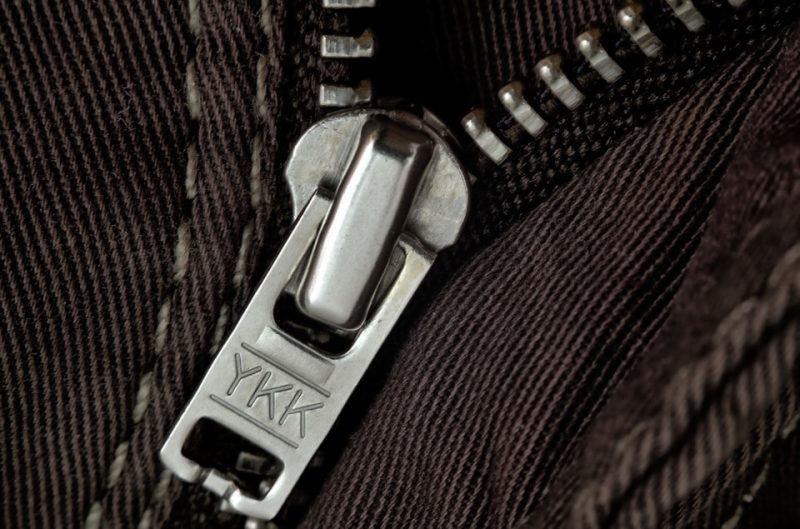Did you know that learning how to make a pillow cover with a zipper only requires three steps? Much like a zippered pillow, you can make a zippered pillow cover at home, even without much sewing experience. You can even follow this guide without a sewing machine!
But why should you learn to sew a zippered pillow cover? Zippered closure makes it quicker to replace the cover of the pillow for washing. It’s also a convenient way to change pillow styles for every season and theme.

How To Make A Zippered Pillow Cover
Step #1. Design
Making a pillow cover with a zipper is no different than making any cover with a different closure type. You start by measuring two pieces of fabric according to the pillow size you’re using. Remember that you can use similar dimensions with the pillow for covers, but some prefer to use an inch of allowance.
You also want to ensure that by copying your pillow insert’s exact size, you still have some material for the seam allowance around half an inch. Now that you have your fabric pieces, please lay them with the right side in and decide on the side that will become the pillow cover’s bottom. This is where your zipper will be.
Once you determined where to put your zipper, place it along the edge and mark it with pins. Remember that you’re not pinning the zipper itself, but the place where it starts and stops. Begin sewing from the edge onto the pin with half an inch of allowance.
Step #2. Attach the zipper
Remember that you must backstitch whenever you start and stop for additional durability. After finishing both sides, you want to make a wide stitch between the pins without backstitching. This stitch is not going to be permanent because you’ll remove it after placing the zipper.
Place the zipper in the seam you just ironed and open face down and pin it in place. You can sew by hand or with a machine starting at the end farthest from the zipper handle. The stitches should be close to the zipper teeth, and you can use regular straight ones.
Unzip the zipper when you’re close to the zipper pull and continue to its end, making sure you’re backstitching the end of your stitch. Move your zipper back and repeat the same process to the other side to finish installing the zipper.
Step #3. Finish the cover
The final step is finishing your pillow cover. Remember to remove the stitch you made with a seam ripper and undo the zipper. Pin the unfinished edges of your pillow cover and sew them with half an inch of allowance.
A useful tip to achieve neat corners is to cut them half an inch from the stitch you made. Then, you should be ready to serge the edges. This way, your pillow cover will last longer and prevent fraying.
You can use a serger, but you can also make zigzag stitches along the edges. You can do this by hand or with a machine. Finally, turn your pillow out and insert the form.
How To Make A Pillow Cover With Envelope Closure
Another typical closure style for pillow covers is by overlapping two fabric pieces at the back. This is called the envelope closure, and you can also do it with or without a machine. You’ll again be starting with preparing the material, which is composed of one front fabric piece and two fabric pieces for the backside.
Step #1. Hem
Begin hemming the back panels by laying the fabric on the wrong side up. You’ll fold the smaller fabric piece at ¼ inches and iron it before folding another ¼ inch and ironing again. Sew this side around ⅛ inches from the inside edge, remembering to backstitch each time you start and stop for durability.
Step #2. Construct
You should be ready to construct your pillow cover by laying it right side up. Pin one of the smaller fabric pieces and place it at the edge with the wrong side up. Then, pin the second fabric piece so that the back panels are overlapping.
Sew all around their edges while backstitching as well. Since you’re making an envelope closure, you don’t need to leave a gap. Once done, clip the corners to round your pillow cover and flip it right side out for stuffing with the pillow form.
What Is A Slipstitched Pillow Cover?
If the two closure styles discussed are still unsatisfactory for you, you can make a slipstitched pillow cover instead. Compared to zippers and envelope closures, this closure is permanent because it uses an invisible seam. The finish looks professional but only appropriate for fabric that you won’t need to wash.
Conclusion
A zipper closure is a convenient style to finish pillow covers because it allows secured yet easy removal. You can quickly learn how to make a pillow cover with a zipper in just three steps with or without a sewing machine. Start by cutting two fabric pieces and install the zipper on one edge.
Then, finish the remaining sides, and your cover is ready to use! You can also experiment with other pillow closures if you want to try other styles. Just remember that patience is necessary with any sewing project.
